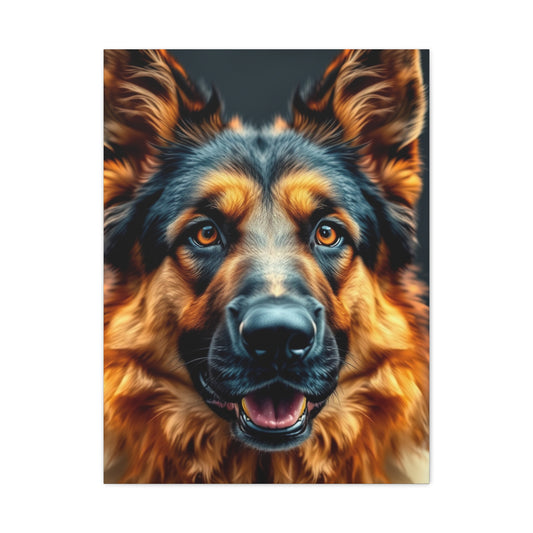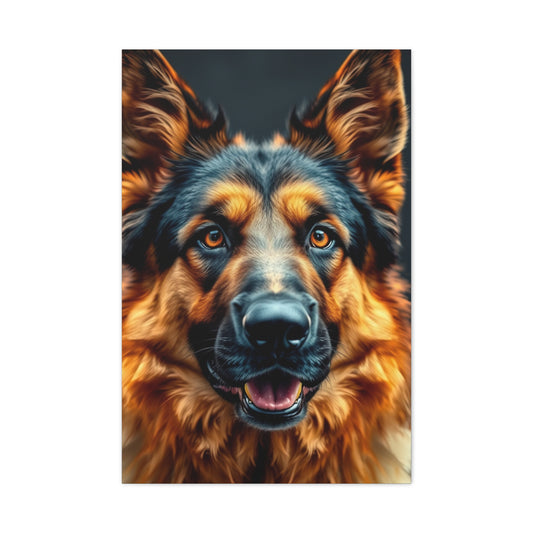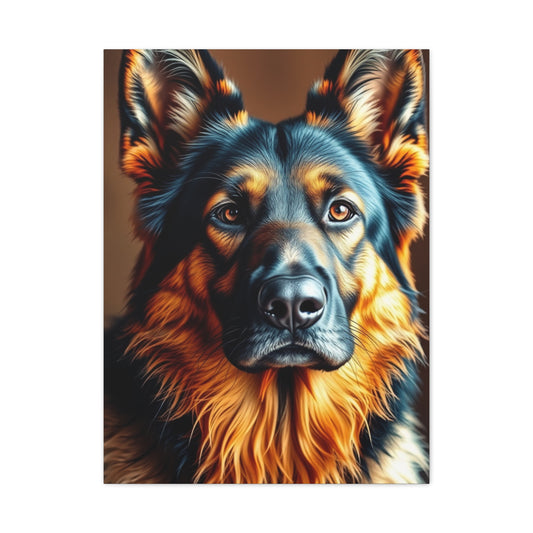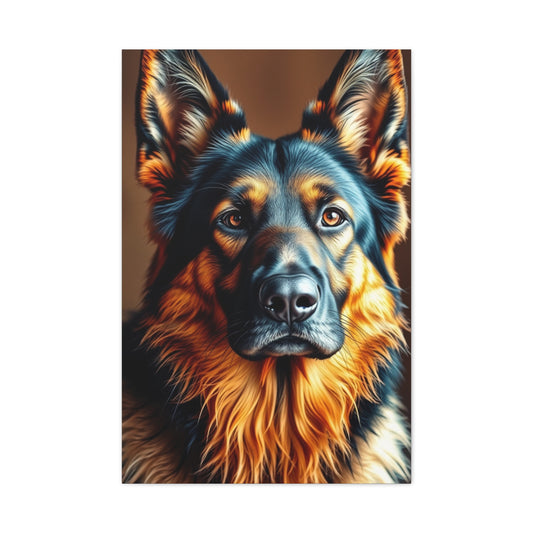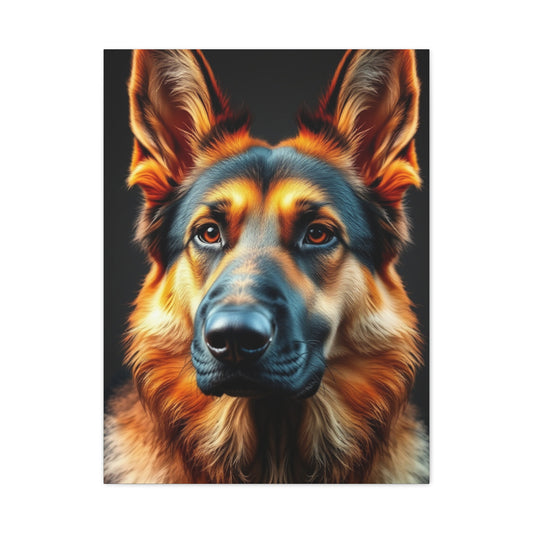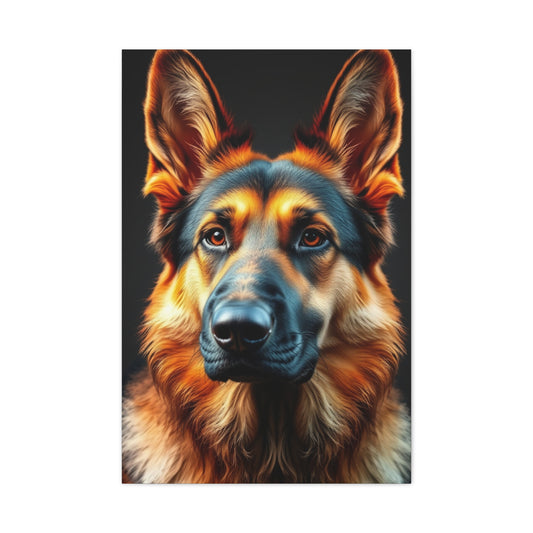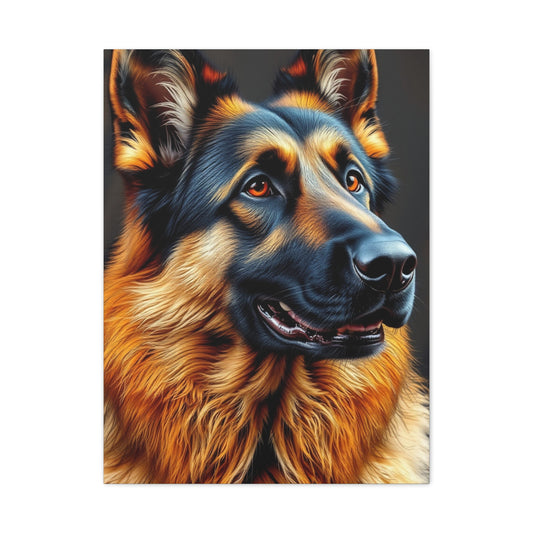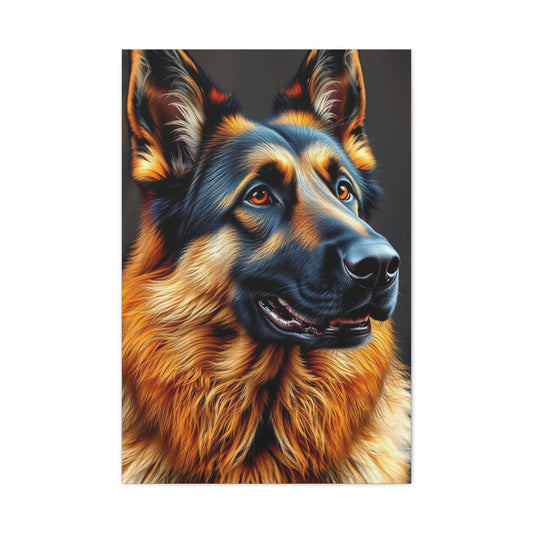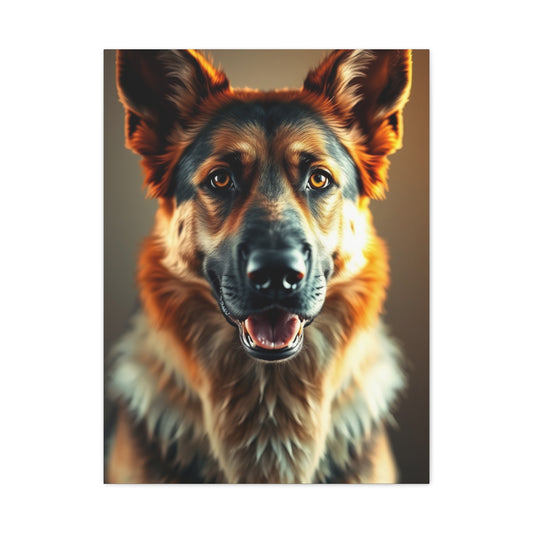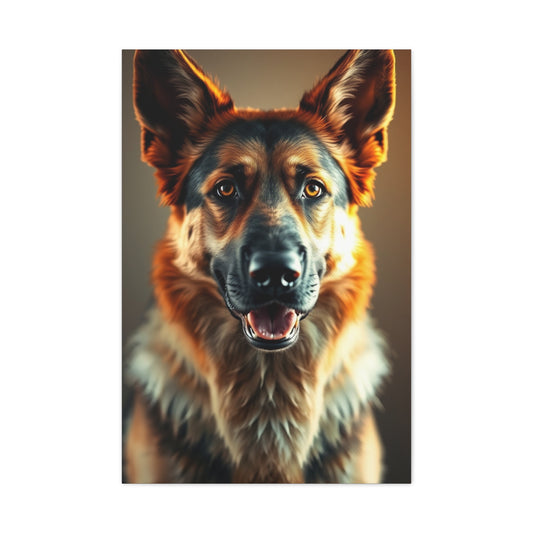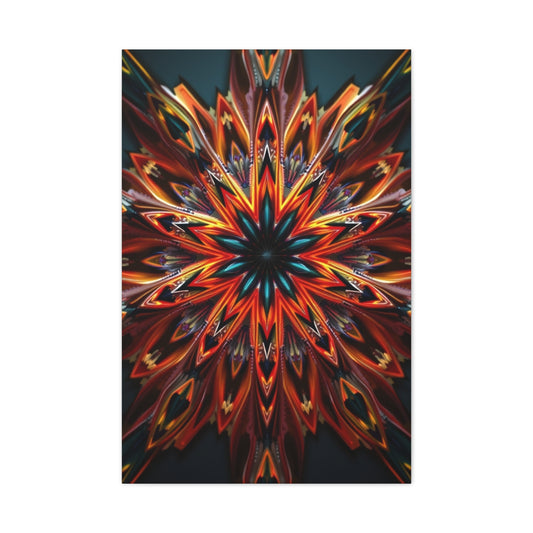Landscape photography continues to be one of the most powerful visual mediums in the modern world. With each image, photographers offer not just a picture of nature—but a carefully composed moment steeped in atmosphere, emotion, and intention. In an era defined by climate awareness, technological innovation, and artistic evolution, the field has never been more vital or expressive.
In 2025, we’re seeing a rich convergence of emerging talents and established visionaries who are shaping how we view the planet. These artists remind us that nature photography is more than technical excellence. It’s about storytelling, preservation, and the way we choose to see the Earth. Whether capturing the freezing silence of the Arctic, the golden haze of a countryside dawn, or the tension between wildness and civilization, the following 27 landscape photographers stand at the forefront of their craft.
1. Justin Minns – Evocative Moods of England
Hailing from the heart of East Anglia, Justin Minns has become one of the most compelling voices in British landscape photography. His work is characterized by a delicate interplay of mood and light, portraying the region’s subtle yet dramatic transitions through the seasons. Rather than chase exotic destinations, Minns turns the familiar into something quietly extraordinary. His images often feature solitary trees enveloped in fog, medieval churches under brooding skies, and tranquil rivers that mirror soft morning light. Each photograph feels contemplative, as though captured in a moment of silent observation.
Minns is a master of light manipulation—not through artificial enhancement, but through patience and timing. He embraces the nuanced lighting that defines the British countryside, from golden glows at dawn to the gray-blue hue of overcast afternoons. His use of post-processing is minimal yet precise, gently enhancing the natural tones without overpowering the integrity of the scene. His landscapes are emotional without being sentimental, and technical without losing their soul.
For photographers looking to understand the artistry behind tonal balance and atmospheric depth, Minns’ portfolio offers a quiet but powerful lesson. His images don’t scream for attention—they linger in the mind long after viewing, like a memory you can’t quite place.
2. Zach Doehler – Expressive Energy from the Pacific Northwest
Zach Doehler is one of the rising stars of the North American landscape photography scene. Based in British Columbia, his work resonates with the raw power and overwhelming scale of Canada’s natural landscapes. But what makes Doehler’s style so distinctive is his ability to infuse a sense of kinetic energy into still images. His photographs seem to pulse with light and movement—storm clouds spiraling above jagged peaks, vibrant auroras sweeping across alpine lakes, or crashing waves glowing under sunset skies.
Unlike many traditional landscape artists, Doehler embraces advanced editing techniques to heighten emotional impact. He doesn't just document what the eye sees; he visualizes how a place feels. His color grading leans toward the cinematic—bold blues, luminous purples, fiery oranges—often applied with an intuitive sense for mood and balance. Rather than saturating for effect, he creates a carefully controlled harmony between light and hue that enhances the natural story of the location.
His personal connection to the terrain adds authenticity. Raised among forests, mountains, and the Pacific coast, Doehler’s work reflects a deep familiarity with the rhythms and temperaments of these environments. Whether photographing the intricate textures of moss-covered woodlands or the expansive solitude of a mountaintop, his lens captures both the grandeur and intimacy of the wilderness.
|
Related Catagories: |
3. Mandy Lea – The Spirit of the Open Road
Mandy Lea represents a refreshing blend of nomadic lifestyle and visual storytelling. Her approach to landscape photography is deeply personal, woven with threads of travel, discovery, and emotional presence. Having transitioned to life in a teardrop trailer, Lea has spent years exploring the American West, photographing its rugged canyons, turquoise lakes, and dense pine forests. Her work doesn’t just showcase nature—it documents a way of life that celebrates freedom, simplicity, and connection.
Lea’s compositions are often romantic in tone, using long exposures and soft lighting to evoke emotion. She frequently captures waterfalls mid-flow, stars spinning over mountain ridges, or golden-hour light pouring through forest canopies. Her style leans into the lyrical and poetic, offering viewers not only a visual feast but a sense of peace and wanderlust. What sets her apart is her ability to make each frame feel like an invitation—to explore, to reflect, and to reconnect with nature’s slower pace.
Her presence in the photography world also includes educational content and travel insights, inspiring countless aspiring photographers to pursue their own creative and nomadic paths. She reminds us that landscape photography is as much about the journey as it is about the final image.
4. Tim Parkin – Analog Traditions in a Digital Age
Tim Parkin stands as a stalwart of traditional photographic values, bringing a philosophical approach to modern landscape imagery. As editor of On Landscape, he plays a pivotal role in shaping the contemporary discourse around nature photography. Parkin’s work is a careful balance of analog discipline and digital evolution. He champions large-format film for its unparalleled tonal richness and depth while also engaging with digital methods in a respectful and restrained manner.
Parkin’s landscapes are studies in light and structure. He avoids overprocessed visuals in favor of natural, believable scenes that reflect a real experience in the field. His attention to framing, exposure, and environmental subtleties often result in compositions that feel timeless—scenes of rivers winding through autumnal forests, windswept moors under heavy skies, and snow-covered hills bathed in golden morning light. There’s a contemplative rhythm to his work, where every detail contributes to a larger, more meditative whole.
His influence extends beyond the frame. Through mentorship and publishing, Parkin advocates for a return to patient observation, thoughtful shooting, and a slower, more intentional creative process. For those seeking to elevate their practice beyond surface-level aesthetics, Parkin’s work and teachings provide enduring wisdom.
5. Trey Ratcliff – Bold Color and Global Reach
Few photographers have pushed the boundaries of landscape photography’s visual language like Trey Ratcliff. With a background in computer science and a curiosity that spans continents, Ratcliff has pioneered the use of HDR (high dynamic range) photography to create striking, surreal images that straddle the line between realism and fantasy. His work spans every corner of the globe—from the icy grandeur of Iceland to the vivid temples of Asia—always marked by a radiant intensity.
Ratcliff’s compositions often feel like dreamscapes. Sunsets erupt in bursts of magenta and amber, cityscapes shimmer under nocturnal glow, and mountains radiate otherworldly textures. What makes his style impactful is not just the visual spectacle but the intentional use of HDR to convey a heightened emotional state. His photographs are engineered to make you feel awe, curiosity, and reverence all at once.
Aside from his own portfolio, Ratcliff is known for making photography accessible. He shares tutorials, behind-the-scenes stories, and creative insights with a vast global audience, encouraging others to explore their surroundings with fresh eyes. His influence is undeniable—not just as an artist, but as a cultural ambassador for creativity, travel, and expressive image-making.
6. David Noton – Harmony in Natural Light
David Noton has long been celebrated as a master craftsman in the world of landscape photography. With decades of experience photographing across every continent, he brings a calm precision to his images that sets them apart. Whether capturing the delicate lavender hues of dawn over Provence or the stark elegance of Patagonia’s peaks, Noton’s work speaks the language of light with extraordinary fluency.
What distinguishes his style is his commitment to balance—not just in composition, but in mood. He relies on natural light to lead the viewer’s eye, often waiting patiently for the right moment to capture a scene in its most harmonious state. His landscapes feel organic and immersive, free of the artificial intensity that sometimes accompanies over-processed digital imagery. This naturalistic approach reveals an artistic discipline shaped by years of visual observation and on-location mastery.
Noton is also known for his educational efforts, helping fellow photographers understand the nuances of lighting, weather patterns, and scene development. His thoughtful compositions and dedication to storytelling through subtlety make him a pivotal figure in both traditional and contemporary landscape imagery. For anyone interested in crafting compelling outdoor visuals rooted in reality and artistic finesse, his body of work offers profound inspiration.
7. Verity Milligan – Gentle Abstractions in Nature
Verity Milligan’s photography transports viewers into a dreamlike interpretation of the natural world. Based in the United Kingdom, she has cultivated a visual style that emphasizes emotion over documentation. Her use of fog, diffused sunlight, and tonal restraint creates quiet scenes that often resemble paintings more than photographs. In her hands, a tree-lined path or a solitary hillside becomes a lyrical study of solitude and serenity.
Rather than chasing dramatic vistas or high-contrast subjects, Milligan leans into minimalism and nuance. Her compositions often highlight moments that others might overlook: dew-soaked fields, morning haze drifting across a river, or shadows cast by silent woodland giants. These intimate landscapes encourage contemplation and evoke mood rather than simply displaying scenery.
Her post-processing is intentionally soft, enhancing atmosphere without distorting reality. This gives her images an ephemeral quality, as though they exist in a space between memory and dream. Milligan’s work invites us to slow down, to appreciate stillness, and to see the beauty in transient, quiet places. For photographers who aim to create evocative, emotion-led landscape photography, her portfolio is a lesson in visual poetry.
8. Christian Hoiberg – Landscapes on the Edge of the Arctic
Few photographers are as intimately acquainted with extreme environments as Christian Hoiberg. Living north of the Arctic Circle in Norway, he has dedicated his craft to portraying the rugged, untamed beauty of the polar regions. His images are expansive, yet never overwhelming—carefully composed to highlight not just the grandeur of glacial peaks and fjords, but also the serenity found in these remote locations.
Hoiberg’s use of low contrast and muted palettes gives his work a distinct visual tone. Snowfields appear soft and infinite, while the light reflecting off icy surfaces is rendered in subtle gradients rather than harsh glare. This artistic restraint results in compositions that feel serene and elemental, capturing the silence and stillness of the Arctic.
What adds further value to Hoiberg’s photography is his role as an educator and guide. Through his workshops and online resources, he teaches others how to work in harsh, cold conditions while maintaining artistic intention. His philosophy emphasizes the importance of being present in the environment, of reading the weather and understanding the rhythm of the land. In doing so, he helps redefine what it means to create immersive, high-impact landscape photography in one of Earth’s most unforgiving yet captivating regions.
9. Jake Guzman – Monumental Visions at a Young Age
At only 24 years old, Jake Guzman has emerged as a prodigious talent in the world of landscape photography. His images carry a visual maturity that belies his age, marked by clarity, symmetry, and a cinematic use of scale. Drawing heavily on the natural drama of the American West, Guzman’s work often features snow-draped mountains, golden valleys, and vast desert expanses—framed with precision and polished with a soft yet vibrant color palette.
Guzman often opts for telephoto lenses to isolate and compress elements of a landscape. This technique allows him to create monumental compositions where towering cliffs and endless skies dominate the frame. His scenes feel grand without feeling distant, often inviting the viewer to experience the sheer scale of nature in a personal, almost immersive way.
His editing style emphasizes warm hues and tonal cohesion. Rather than overly dramatizing the scene, he focuses on refining the mood—highlighting how it felt to be in that moment, under that sky, with that view. This intuitive approach, combined with his attention to detail, gives his work a timeless appeal. Jake Guzman is proof that age is no barrier when vision and dedication align, and his future in landscape photography promises to be as expansive as the vistas he so expertly captures.
10. Philip Slotte – Darkness as Drama
Philip Slotte’s landscapes feel like visual echoes of myth and legend. Based in Sweden, his imagery is steeped in moody ambiance, using deep shadows, cool tones, and dramatic compositions to evoke feelings of reverence and awe. His preference for shooting during the twilight hours—when the sun hovers just below the horizon or heavy clouds obscure the sky—imbues his photos with a cinematic gravitas rarely matched in contemporary work.
Slotte’s artistry lies in his ability to turn darkness into a narrative tool. Reflections on still lakes, silhouettes of jagged peaks, and distant light filtering through ominous skies all become vehicles for emotional storytelling. Rather than revealing everything, his images often conceal—drawing the viewer into a space that is more psychological than geographical.
Refinement is key in Slotte’s post-processing. He avoids high saturation and artificial vibrancy, instead favoring tonal gradients that feel natural but potent. The emotional tension in his work comes not from extreme weather or rare phenomena, but from the interplay of light and shadow, scale and texture.
He’s a photographer for those who appreciate mood-driven storytelling, where the landscape isn’t just a setting, but a character in its own right. Slotte reminds us that beauty isn’t always found in light—it can just as powerfully emerge from darkness.
11. Dustin LeFevre – Form and Texture in Focus
Dustin LeFevre brings a sculptural sensibility to landscape photography. Rather than chasing sweeping panoramas or grand scenic vistas, his eye gravitates toward texture, shape, and geological intricacy. His compositions often feature rugged desert rock formations, wind-carved ridges, and ancient canyons, captured in ways that make the land feel tactile—almost within reach.
By isolating elements of the landscape and framing them closely or abstractly, LeFevre creates visual studies of earth’s architectural wonders. These aren’t traditional postcards; they are meditations on the earth’s physical structure. His images are layered with natural design, turning erosion patterns, strata, and stone grains into striking focal points. Whether it's the undulating lines of a sandstone wave or the fractured surface of a dried lakebed, his work draws attention to the often-overlooked elegance of the terrain.
LeFevre’s photographic method relies heavily on intentional light use. He typically shoots during the golden hours when shadows stretch across textured surfaces, revealing depth and dimension that would otherwise remain flat. His editing is restrained, focusing on enhancing the tonal gradients that highlight contours and form. For landscape photographers seeking to explore the abstract and architectural qualities of nature, Dustin LeFevre’s approach offers a valuable shift in perspective—where the surface becomes the subject, and detail takes precedence over scale.
12. Suzanne Mathia – The Southwest Storyteller
Suzanne Mathia’s photography is a rich narrative of the American Southwest, weaving together environmental grandeur, historical remnants, and cultural echoes. Her landscapes are not only breathtaking in scope but also deeply layered with meaning. Old mining tools, rusted fences, or forgotten machinery often appear in the same frame as immense cliffs or glowing sunsets, bringing together the human and the elemental in seamless harmony.
|
Related Catagories: |
What sets Mathia apart is her ability to find stories within static scenes. Her photographs feel as though they belong in a documentary—yet they retain an artistic grace that elevates them beyond documentation. She captures the long shadows of dusk stretching across abandoned railways, the crumbling edges of a ghost town beneath dramatic skies, or the swirl of monsoon clouds over a cactus-covered ridge. Each frame invites the viewer to ponder the intersection of past and present, decay and endurance.
She excels at balancing compositional strength with emotional resonance. By blending broad desert vistas with intimate environmental detail, Mathia presents a holistic vision of place. Her sense of timing and her eye for light—often soft and golden—bring a cinematic quality to her work. For photographers intrigued by the storytelling potential of landscape imagery, her work offers an exemplary model of how to infuse visual artistry with historical awareness.
13. Huibo Hou – Quiet Drama in Monochrome
Huibo Hou is known for her exquisite black-and-white landscapes that transcend literal interpretation and drift into the realm of visual poetry. Working primarily in grayscale, she crafts compositions that emphasize contrast, form, and rhythm. In the absence of color, her work highlights the drama found in texture, geometry, and negative space—allowing the raw bones of the landscape to take center stage.
Her photographs often feature remote wilderness, including snow-covered ridges, leafless trees, and rolling hills shrouded in fog. But it’s not the subject alone that makes her work powerful—it’s the clarity and control in her tonal transitions. Every image is precisely balanced, revealing the quiet tension between darkness and light, presence and emptiness.
Hou’s background in fine art clearly informs her approach. Her work feels less like a record of place and more like a dialogue with it. She removes distractions, isolates structure, and lets the land speak in whispers. Her editing process is meticulous, often yielding images that are stark yet emotive, minimal yet expressive.
For landscape photographers interested in monochrome photography, Huibo Hou provides a masterclass in restraint. Her minimalist yet commanding style demonstrates that removing color doesn’t mean removing impact. In fact, her work proves that sometimes the absence of color can reveal more about a landscape’s soul than any vibrant palette.
14. Kilian Schönberger – Mythic Forests and Hidden Valleys
Kilian Schönberger has built a distinctive voice in landscape photography by transforming familiar terrains into surreal, almost mythological settings. Based in Germany, he often photographs central and eastern European landscapes, particularly dense forests, mountain ranges, and fog-veiled valleys. His images evoke the feeling of wandering into a forgotten fairytale or stumbling upon the ancient heart of a forest untouched by time.
Schönberger has an exceptional talent for capturing atmosphere. His use of diffused natural light and subtle tonal shifts lends his photos a painterly quality that softens edges and enhances mood. He often photographs during fog, which he uses as a natural diffuser to obscure the background and draw focus to the shapes within the frame—bare tree trunks, winding forest paths, moss-covered stones. The result is a visual language that feels both ancient and ethereal.
His background in geography adds an analytical layer to his creative vision. It’s clear that his understanding of terrain, light patterns, and environmental behavior informs his work, allowing him to anticipate atmospheric conditions and position himself for optimal compositions.
Kilian Schönberger’s landscapes are an invitation into a quieter world. They resonate with those who find beauty in solitude, who see forests as cathedrals and valleys as stories yet to be told. His unique style has earned him international acclaim and continues to influence photographers seeking to blend realism with romanticism.
15. Thomas Heaton – Simplicity as Strength
Thomas Heaton is a British photographer who has become a leading figure in the landscape photography community not through flamboyant techniques, but through the consistent pursuit of elegant simplicity. His work is grounded in the idea that less is often more. He brings attention to the subtle interplay between land and light, framing his subjects with clarity and thoughtfulness rather than complexity.
Heaton is known for his use of natural elements—rock, water, sky, foliage—to create compositions that feel both grounded and spacious. His images often feature wide-angle views with foreground interest leading the eye through the frame, but what truly makes his work stand out is the emotional tone he evokes without needing to rely on extreme conditions or intense editing.
Rather than chasing drama, Heaton seeks balance. A lone boat on a misty lake, morning frost catching the tips of reeds, soft waves curling onto a rocky beach—these are the kinds of moments that populate his portfolio. His understanding of natural light allows him to bring out mood and form with finesse, creating a visual experience that is calm, reflective, and authentic.
Beyond his photographic skill, Heaton also connects with a broad audience through his educational content and field-based storytelling. His dedication to slow photography, thoughtful planning, and honest reflection has influenced countless hobbyists and professionals alike.
16. Simon Roberts – Land as Social Commentary
Simon Roberts offers a rare lens in landscape photography, one that doesn’t shy away from the human element. Rather than avoiding signs of civilization, he deliberately includes people, architecture, and infrastructure to create meaningful juxtapositions between society and the natural world. His large-format images often feature public gatherings, industrial outskirts, or quiet pastoral scenes peppered with human life, transforming landscapes into social narratives.
His visual language is informed by a documentary mindset. Roberts treats the landscape not just as scenery but as a lived environment—one that reflects national identity, political change, and historical evolution. His acclaimed series "We English" is a compelling example, showcasing the British countryside not as isolated nature but as a space where culture unfolds. Whether capturing a football match in a village field or a quiet family picnic under grey skies, Roberts encourages viewers to contemplate our relationship with land—not as outsiders looking in, but as participants who shape and are shaped by our surroundings.
His framing is often elevated and wide, allowing the land to dominate while human figures become part of the scene’s natural geometry. This subtle visual hierarchy invites critical thinking rather than emotional distraction. For those exploring landscape photography as a medium for social documentation, Simon Roberts sets a benchmark for thoughtful, visually articulate storytelling.
17. Andy Farrer – Expansive Composition
Andy Farrer is a British landscape photographer whose work embodies the immersive nature of wide-angle composition. With a keen eye for spatial depth, he crafts images that place viewers at the heart of the scene—be it a rugged cliff above the English Channel or a frost-covered path winding through the New Forest. His sense of space is dynamic and deliberate, capturing not just the appearance of a place, but its atmosphere and movement.
Farrer is known for his masterful control of foreground interest, often using rocks, tide lines, or grassy knolls to guide the viewer’s eye into distant backgrounds. This technique gives his images a cinematic quality, creating visual journeys rather than static views. The careful use of perspective ensures that every component in the frame serves a narrative function, from cloud formations to light reflections on water.
His work is deeply rooted in the UK’s diverse natural textures—chalk cliffs, heather-covered hills, marshlands—and often timed to coincide with transitional light. Early mornings and late evenings are frequent settings, when colors soften and shadows stretch, bringing emotion to composition. Farrer’s landscapes feel alive but unforced, crafted with patience and a deep appreciation for place.
In addition to his photographic work, Farrer leads workshops and shares insights with aspiring photographers, offering guidance on how to build compelling images through structure, timing, and environmental engagement.
18. Vanda Ralevska – The Inner Landscape
Vanda Ralevska is a photographer whose work transcends physical terrain, instead focusing on what she calls the "inner landscape." Her images express the emotional undercurrents of nature, where memory, mood, and personal reflection converge to create evocative visual poetry. Through soft light and subtle textures, she captures places not just as they are, but as they feel.
Ralevska’s compositions are often intimate—close studies of woodlands, reflections in quiet water, or the way sunlight filters through early-morning mist. She rarely seeks grandeur. Instead, her photographs whisper, offering a contemplative experience that asks viewers to slow down and absorb the nuance of stillness. Her subjects are familiar yet transformed, rendered with a sense of nostalgia and timelessness.
Her editing style leans into softness rather than contrast. She often desaturates color to achieve harmony, creating cohesive palettes that evoke serenity and peace. This restraint enhances the emotional impact of her work, making each image feel like a moment preserved in the folds of recollection.
For landscape photographers who are less interested in dramatics and more invested in evoking introspection, Vanda Ralevska provides a compelling blueprint. Her photographs are not simply representations of place—they are mirrors for emotion, crafted through light, patience, and intuition.
19. Carla Regler – Weather-Worn Wilderness
Carla Regler specializes in capturing nature’s raw, weather-beaten moments, particularly along the stormy shores and dramatic coastlines of Scotland’s Outer Hebrides. Her landscapes are dynamic and powerful, filled with motion, texture, and tension. Storm clouds, crashing waves, and wind-lashed cliffs are frequent subjects—elements not feared but embraced.
Regler’s photography stands out for its ability to convey both energy and balance. While her scenes are often defined by wild weather and unpredictable light, she maintains compositional clarity. The visual chaos of a storm is tamed through strong framing, contrast control, and deliberate use of shutter speed. Long exposures transform wild seas into soft mist; short exposures freeze cascading water into sharp, crystalline structures.
There’s a tactile quality to her images. You can almost feel the damp air, hear the rush of wind, and sense the weight of impending rain. Her color choices often reflect the natural palette of the region—deep blues, muted greens, and the occasional burst of gold piercing a grey sky.
In addition to her photographic work, Regler runs tailored workshops, guiding participants through rugged environments where weather is both challenge and collaborator. Her images are a testament to the beauty found in adversity, proving that the most compelling landscape photography often comes from standing firm in the face of nature’s power.
20. Paul Sanders – The Philosophy of Place
Paul Sanders approaches landscape photography as a meditative practice, using the camera not only as a creative tool but as a means of mindfulness and self-awareness. His images often contain singular elements—solitary trees, calm water, minimal silhouettes—arranged with a painter’s sensitivity to space and silence. His minimalist aesthetic isn’t rooted in aesthetic trend, but in personal philosophy.
Sanders transitioned from a high-pressure career in editorial photography to embrace a slower, more intentional pace. This shift is evident in every frame he captures. There is no rush in his work. Scenes unfold gently: fog drifting across a hillside, frost forming delicate lace on a wooden fence, reeds swaying in a still pond. These aren’t scenes that demand attention—they invite presence.
His compositions are guided by internal clarity rather than external drama. He often removes unnecessary detail to focus on balance, symmetry, and tone. This minimalism fosters an emotional quietude that resonates with viewers seeking respite from a visually overstimulated world.
Beyond photography, Sanders is also a mentor and speaker who encourages others to use photography as a path toward wellbeing. His message is simple yet profound: landscapes don’t just exist out there—they exist within us. His work is an invitation to observe more deeply, breathe more slowly, and reconnect with both land and self.
21. Lizzie Shepard – Order in the Chaos
Lizzie Shepard has a remarkable talent for extracting compositional clarity from nature’s complexity. Her photography often explores intricate environments—dense woodland interiors, tangled coastal scenes, or layered geological textures—yet each image she creates presents a carefully orchestrated harmony. Through her lens, disorder becomes design, and clutter becomes composition.
What defines Shepard’s work is her mastery of visual balance. She intuitively understands how to guide the eye through a photograph, using subtle lines, tonal gradients, and the rhythmic repetition of forms. While many photographers avoid visually busy settings, Shepard thrives in them. She embraces the challenge of working with chaotic environments and reframes them with elegance and grace.
Beyond her personal portfolio, Shepard is deeply involved in the photographic community. She regularly serves as a judge for prestigious landscape competitions and contributes to educational platforms, offering workshops and critiques that help other artists sharpen their compositional awareness. Her work reminds us that beauty can be found not only in sweeping vistas but also in the tangled, untamed corners of the natural world—if only we have the patience to see it.
22. Charlie Waite – Legacy of Classical Landscapes
Charlie Waite is an enduring icon in the world of landscape photography. With a career spanning several decades, he has established himself as one of the genre’s most influential voices. His images are often described as painterly, not just because of their visual beauty but because of the compositional discipline and tonal precision he brings to every frame.
Waite’s landscapes are distinguished by their balance, clarity, and sensitivity to light. He often photographs in soft conditions, such as mist or diffuse early morning light, which lend his work a timeless and tranquil atmosphere. His compositions draw heavily from the principles of classical art—foreground structure, leading lines, and a calm horizon—and yet his work never feels formulaic. Each photograph is uniquely crafted to honor the specific qualities of its setting.
He is also a passionate educator and the founder of Light & Land, a long-standing workshop program that has helped thousands of photographers develop their landscape skills. Waite’s influence extends well beyond his images; he has helped shape how generations of photographers understand the relationship between land, light, and emotion. In a fast-paced world, his work continues to stand as a quiet reminder of the power of patience, craftsmanship, and respect for the natural environment.
23. Ted Gore – Chromatic Mastery
Ted Gore brings a scientific precision and artistic sensitivity to his landscape photography, particularly in his handling of color. His photographs are visual symphonies—where every hue, tone, and contrast is purposefully orchestrated to evoke an emotional response. Gore is a rare talent who understands not just how to use color effectively, but how to make it meaningful.
His compositions often layer dynamic geological formations, moody skies, and dramatic light in a way that tells a cohesive visual story. Each frame is filled with tonal transitions that feel both hyper-real and completely natural. Gore’s style sits at the intersection of fine art and visual design, making him especially respected among photographers who seek both beauty and technical excellence.
His post-processing workflow is part of his signature. Using advanced color theory techniques, he adjusts each image to achieve maximum visual harmony, ensuring that every part of the frame contributes to the overall mood. His work has inspired a new generation of artists to treat color not merely as a feature, but as the very language of landscape expression.
24. Stephen Shore – Everyday Grandeur
Stephen Shore’s landscapes stand apart for their quietness, often presenting mundane or overlooked environments in a way that elevates them to visual significance. A pioneer in color photography, Shore helped reshape the perception of what constitutes a compelling landscape. Instead of chasing epic vistas or untouched wilderness, he focuses on highways, parking lots, suburban fields, and transitional spaces that reflect modern life.
His compositions are rooted in documentary aesthetics but go beyond simple observation. They ask viewers to reframe their expectations, to find beauty in flat light, muted tones, and commonplace structures. Shore's images are meditative, often inviting the viewer to slow down and engage with subtle visual details like the texture of asphalt, the shadow of a power line, or the repetition of rooftops in a horizon line.
His approach emphasizes neutrality and directness. There is no romanticized grandeur, yet the work is undeniably poetic. For those who see photography as a vehicle for social commentary and quiet reflection, Shore’s legacy offers an alternative model of landscape work—one that is deeply rooted in the real, the familiar, and the temporally significant.
25. Edward Burtynsky – The Industrial Sublime
Edward Burtynsky’s landscape photography is monumental in scale and ethical in intent. Known for his aerial images and large-format compositions, Burtynsky explores the impact of industry and resource extraction on natural environments. His subjects include quarries, oil fields, mines, manufacturing plants, and sprawling urban developments—transformed by his camera into vast, abstract patterns of color, line, and form.
His work challenges traditional landscape aesthetics. Where classical photographers might avoid evidence of human alteration, Burtynsky embraces it, highlighting the tension between beauty and exploitation. His images confront the viewer with a dual reaction—admiration for their visual complexity and concern over their ecological implications.
Burtynsky’s photographs are powerful because they don’t preach; they present. They allow the viewer to absorb the enormity of human activity through a lens of detached precision. This neutrality gives the work emotional and philosophical weight, making it a cornerstone of contemporary environmental photography. In a world grappling with climate change and resource scarcity, Burtynsky’s vision feels not only artistic but essential.
26. Simon Norfolk – Landscapes of Conflict
Simon Norfolk brings historical consciousness to landscape photography, often focusing on regions affected by war, colonization, or political transformation. His images are austere, layered with narrative, and structured to prompt reflection rather than spectacle. Norfolk uses the land as a witness—photographing ruins, remnants, and relics that hint at stories far larger than what’s in the frame.
His compositions are sharp and clean, often captured at dawn or dusk when light dramatizes decay. But what defines his work is its intellectual rigor. Each project is grounded in deep research and thematic intent. Whether documenting the remains of military structures in Afghanistan or the fading colonial imprints in Africa, Norfolk doesn’t just show us places—he engages with their meaning.
His landscapes are rarely lush or inviting. Instead, they are stark and charged with context. He compels the viewer to confront uncomfortable truths about power, memory, and impermanence. For those who believe that landscape photography can be a tool for cultural critique and historical documentation, Norfolk’s work is essential viewing.
27. Ansel Adams & Richard Misrach – Timeless Inspiration
Ansel Adams and Richard Misrach belong to different generations, yet both have shaped the trajectory of landscape photography in lasting ways. Ansel Adams brought precision, tonal mastery, and environmental activism to the genre. His black-and-white images of the American West, particularly Yosemite, remain iconic for their depth, sharpness, and compositional perfection. His work helped define the aesthetic and ethical foundation of modern nature photography.
Richard Misrach, by contrast, brings a quieter, more conceptual sensibility. His use of soft color, minimalist composition, and wide-open space invites contemplation. Misrach often photographs in environments marked by human influence—deserts near nuclear test sites, fenced borders, or landscapes altered by pollution. His approach is less dramatic but no less affecting, using beauty as a way to provoke introspection.
Together, Adams and Misrach represent two poles of landscape vision: one bold and heroic, the other subtle and cerebral. Their continued relevance reminds us that landscape photography can be many things—a tribute, a question, a warning, and a celebration. They challenge us not only to see the world but to understand our place within it.
Final Reflection: The Art of Seeing Through the Landscape
These 27 landscape photographers don’t just take pictures—they interpret the world. Through fog, light, stillness, or movement, they help us reimagine what a photograph of nature can be. They expand the vocabulary of landscape photography, turning it into a rich dialogue between self, place, and time. As you explore their work, don’t just seek inspiration. Look for patterns, philosophies, and choices. Ask why each frame works—what story is being told, and how you might tell your own. The best way to learn landscape photography is not just to emulate but to evolve. And with these visual trailblazers as guides, there’s no better time to start that journey.










